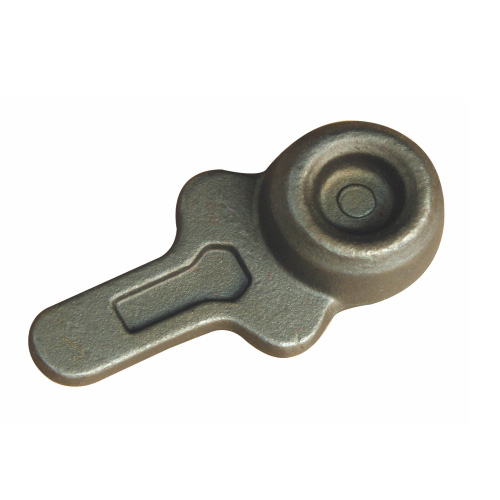Here are some key points about steering arm forgings
2023-12-20
Steering arm forgings are components used in the steering systems of vehicles, providing a connection between the steering mechanism and other components such as the steering knuckle or tie rods. These forgings are crucial for controlling the movement of the wheels and ensuring proper steering functionality. Here are some key points about steering arm forgings:
1. Function:
- Steering arms, also known as steering levers or steering arms, play a pivotal role in the steering system of vehicles. They transmit the motion and force from the steering mechanism to the wheels, facilitating the control and direction of the vehicle.
2. Materials:
- Steering arm forgings are typically made from materials with high strength and durability, such as alloy steel. The choice of material depends on factors like the intended application, load requirements, and the need for wear resistance.
3. Forging Process:
- The forging process used for steering arms involves shaping metal through the application of force. Common forging methods include closed-die forging, open-die forging, or press forging. This process enhances the strength and structural integrity of the component.
4. Complex Geometry:
- Steering arms often have complex geometries to accommodate various design requirements and connection points within the steering system. Forging allows for the creation of intricate shapes and contours while maintaining the desired mechanical properties.
5. Machining and Finishing:
- After forging, steering arm forgings may undergo precision machining to achieve specific dimensions and tolerances. Additionally, finishing processes, such as heat treatment and surface treatments, may be applied to enhance the mechanical and corrosion-resistant properties of the component.
6. Connection Points:
- Steering arms have attachment points for other steering components, such as tie rods or the steering knuckle. The design of these connection points is critical for the proper functioning of the steering system.
7. Heat Treatment:
- Heat treatment processes may be applied to the steering arm forgings to optimize their mechanical properties, including hardness and toughness. This helps ensure the component can withstand the forces and stresses experienced during vehicle operation.
8. Quality Control:
- Rigorous quality control measures are implemented during and after the manufacturing process to ensure that steering arm forgings meet industry standards and specifications. This includes inspections, testing, and adherence to dimensional tolerances.
9. Application in Various Vehicles:
- Steering arm forgings are used in a range of vehicles, including cars, trucks, buses, and agricultural machinery. Their design and specifications vary based on the specific requirements of the vehicle and its intended use.
10. Safety Considerations:
- Given their critical role in the steering system, the quality and reliability of steering arm forgings are paramount for vehicle safety. Manufacturers must adhere to industry standards and conduct thorough testing to ensure the performance and durability of these components.
In summary, steering arm forgings are essential components in the steering systems of vehicles, contributing to the control and maneuverability of the vehicle. The forging process, along with subsequent machining and finishing steps, allows for the production of robust and precisely engineered steering arm components.



